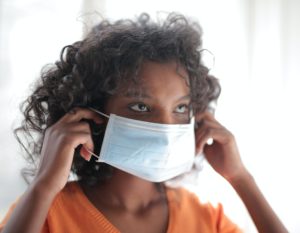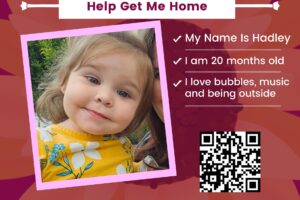
Face masks have become essential accessories in the effort to prevent the spread of COVID-19. They’re especially important in stopping the spread of the coronavirus because people can carry and spread the virus even when they are not exhibiting symptoms. But for a mask to be effective, it has to be used correctly. Here are some helpful hints from NewYork-Presbyterian’s Health Matters about wearing a face mask, from how to put it on properly to how to clean it.
Choose the Right Mask
A cloth face mask provides a physical barrier that helps reduce spread of the virus via droplets from your mouth and nose but allows breathing through the fabric. Surgical masks can be used as well, if available, although the CDC is currently asking people to save them for healthcare workers. The N95 mask or respirator should be reserved for healthcare workers because they have close contact treating patients.
Cover Your Mouth and Nose with a Snug Fit
A face mask must cover your mouth and nose, and it must fit snugly but comfortably on the face. Most masks either have loops or straps that go behind the back of the head or around the ears for a snug fit. Many commercial masks come in different sizes, and you should pick the one that fits you best.
Put Your Mask On and Take It Off Correctly
Have clean hands when you put on your mask. When you return home, wash your hands before removing your mask and take if off from the back, handling it by the ear loops or straps. Make sure to put the mask in a dedicated safe place, such as a bag, until you wash it, and then disinfect your hands again. If there are several members in the household, make sure only you handle your own mask.
Don’t Touch Your Mask After it’s On
Be sure to put on your mask properly, making sure it fits snugly, especially around your nose, and securing it around the back of your head or behind your ears. If you inadvertently touch your mask, clean your hands immediately afterward. Having a small bottle of hand sanitizer in your pocket is very helpful — in case you absolutely do have to touch your mask.
Don’t Lower Your Guard
Wearing a face mask does not replace other safeguards — but just adds to them. Social distancing remains one of the most important actions to protect yourself from getting COVID-19. A face mask is not a “free pass” to abandon social distancing or drop other protective measures.
Wash Your Cloth Mask Frequently
Wash your cloth mask frequently, ideally every day you wear it. Masks should be washed and dried at a high temperature. Using bleach to decontaminate them can also be useful. Before washing them, masks should be stored inside a zip-close plastic bag and not mixed together with your other laundry or with your clean masks. It’s advisable to have at least five masks so you can wash them properly between uses. Also, be sure not to share masks with other household members. Medical masks are disposable and designed to be discarded after use.
Take Steps to Keep Your Glasses from Fogging Up
A lot of people struggle with their glasses getting fogged up when they wear masks. The best prevention is to have a snug fit of the mask on the bridge of the nose. This way, no air will escape through that route and cause fogging that could impair your vision.
Don’t Put a Mask on a Baby
Babies and toddlers under the age of 2 should not wear face masks, but children should. Fortunately, young children are at a very low risk of getting seriously ill from COVID-19.
Wear a Mask at Home If You’re Sick
For people who are not showing symptoms, generally there is no reason to wear a mask in the home. However, if a household member exhibits the classic symptoms of COVID-19, the affected person should self-isolate within the home. When interacting with other household members, masks should be worn by both the affected and unaffected household members. Remember, if you have typical symptoms of the disease, you must self-quarantine at home, and you must not go out in public at all.
To find a NewYork-Presbyterian Hudson Valley Hospital physician, visit nyp.org/hudsonvalley. To read more about how to stay healthy amid the outbreak, please visit: NewYork-Presbyterian’s Health Matters blog at https://healthmatters.nyp.org.








It’s good to know that you shouldn’t touch it after putting it on. My husband is needing to go back to work in a couple of weeks, and he is needing to find a mask to wear so that he can be safer, and he wants to make sure that he uses it correctly. I’ll make sure to pass this information along to him once he finds a mask to wear when he goes back to his work.